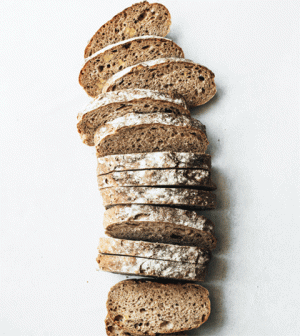- Finding Unshakable Power in a World That Wants to Pull Us ApartPosted 6 months ago
- What could a Donald Trump presidency mean for abortion rights?Posted 6 months ago
- Financial Empowerment: The Game-Changer for Women in Relationships and BeyondPosted 7 months ago
- Mental Health and Wellbeing Tips During and After PregnancyPosted 7 months ago
- Fall Renewal: Step outside your Comfort Zone & Experience Vibrant ChangePosted 7 months ago
- Women Entrepreneurs Need Support SystemsPosted 7 months ago
6 Tricks for Telling if Your Whole Grain or Whole Wheat Bread is the Real Deal

By Jill Ettinger | NaturallySavvy.com
Whole grain and whole wheat bread are good for us, right? Right. Except, not so fast.
Did you know that food brands can mislead you with “whole” claims on labels? I know, big surprise. But that doesn’t mean all whole grain or whole wheat bread products are scams. It does help to know the difference though.
Here are a few tips on buying whole grain products:
1. Whole grain can also mean separated grain.
Yep. Even if a manufacturer uses all parts of the grain (germ, endosperm and bran), it doesn’t have to be in its whole form. So, why is that bad? Deconstructing the grain, which is called refining or processing, takes away the inherent benefit of the grain in its natural state. So, while technically, taking apart the grain and putting all those parts into the product does mean the “whole” grain is in there, it’s not really. Generally speaking, you can decode a label to see if it includes terms like “wheat bran” or “wheat germ.” Those would mean it’s not a whole grain that’s in the product but lower nutritional value grain parts.
Read more about why processed foods are killing you
2. Watch out for multi-grain claims.
Ooh, multi grains! It’s like a food lottery, right? What super ancient nutritious grain are we going to bite into next? Chances are, it’s little more than corn, rice or wheat, and, in most cases, those ingredients can also be refined and processed, removing their inherent nutritious benefits. Read those labels and look for “whole millet” or “whole quinoa” etc to be sure you’re getting whole multi grains. And also look at what types of flour are in the bread, for example. It may include whole multi grains but the base may still be a processed bleached white flour.
3. Don’t trust the color.
A bread may claim to include whole wheat or whole grains and its rich dark color may make you think it’s the real deal. But read closely and look for added colors like caramel coloring, which can be added to an otherwise white bread that includes just a smidge of whole wheat flour or grains.
4. Check the fiber.
A good rule of thumb is at least one gram of fiber for every ten grams of carbs. If not, you’re likely getting a processed and refined bread or whole grain product, despite what the claims on the front of the package tell you.
5. Count the ingredients.
Bread is an especially simple food: flour, salt, water, yeast. A whole grain bread might include more ingredients, but they’re easy to recognize as the names of whole grains. Once you start getting into other ingredients that are more difficult to pronounce, there’s a good chance that product isn’t as clean as you think. If you shop at a local farmers market, lots of them now feature local bakers who make fresh bread daily, often much of it whole grain based. They don’t use the preservatives store brands do because they want you to eat their products right away, while they’re fresh. Check with them for a truly whole grain product and look at their ingredients too.
Read more about scary ingredients used in bread manufacturing
6. Enriched is not your friend.
It sounds friendly enough-something good only better because it’s enriched! But it doesn’t work that way. Enriched food means the original ingredients have been stripped of their inherent nutrients and have to be added back in. That’s a big red flag on any food, not just whole grain or wheat products.






